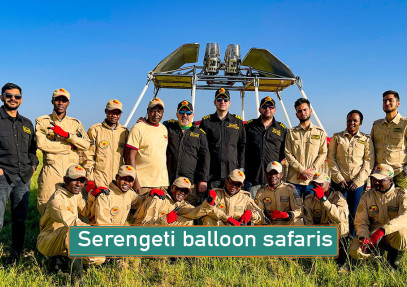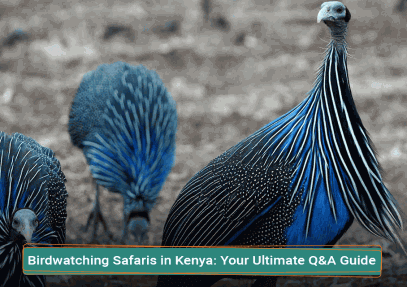
Indian wildlife safari tours will take you into the heart of India’s lush jungles where wildlife flourishes, giving visitors the opportunity to experience popular wildlife attractions all over the country. Search for Asiatic lions in Gir National Park and Bannerghatta National Park while Indian leopards can be seen in many of the national parks including Bandhavgarh National Park and Jim Corbett National Park. Royal Bengal tigers can be seen in tiger reserves, of which India has around 50. These reserves are part of an ongoing conservation program for royal Bengal tigers.
Once you book a safari, your safari tour operator will give you some rules to follow during your Indian safari tour to get the very best experience from it. Here we have created our own handy list of guidelines. Before we go any further, remember there is one rule that every visitor has to follow: listen to your safari guide and driver at all times. They are highly experienced and will help you have a fantastic time while keeping you safe.
Things to consider when packing for an Indian safari
- The best time to visit many of the Indian parks is at the beginning of summer. However, India is a hot country and during the summer months (March-May) daytime temperatures can be as high as 106°F/41°C while nights can be 84°F/28°C. Head to the higher national parks for cooler temperatures. If you are visiting India during summer, pack modest, lightweight summer clothes.
- Travelling in the winter months (November-February) is also a good time as the temperatures can be pleasant during the day but may drop to 59°F/15°C. Pack layers to keep warm. The forests in the national park in particular can be a lot colder.
- Pack essentials such as sunscreen, sanitiser, hat and sunglasses. The majority of safari vehicles in Indian national parks are open, so you’ll have to protect yourself from the direct sun rays.
- If you’re planning an Indian safari during the monsoon months (June-October) you should pack raincoats and jackets. In addition, take a rain cover for your cameras and other devices.
- At all times, avoid wearing flashy colours and stick to neutral colours such as beige, brown and green.
- Visitors should carry some cash for purchasing souvenirs as well as for tipping the divers and tour guides. Although the safari tour often covers meals, there is always the need for snacks. Visitors could carry around 200-500 Indian rupees.
- India prohibits the possession of unlicensed firearms and other dangerous weapons. The forest department in India has forbidden people from carrying weapons inside the park. It is also one of the measures to keep poachers at bay. According to the 1972 Indian Wildlife Act, the firearm owner has to acquire prior permission from the Chief Wildlife Warden to carry any weapon. The owner also has to pay a registration fee.
Things to remember on a Indian wildlife safari
- Always keep your passport on you. Visitors need to show their passports and ID for booking safari permits and for gaining entry to national parks.
- Eat lightly before you begin your safari as often a heavy meal can make you sleepy and keep you from enjoying.
- When you are on an Indian jungle safari, be silent and listen to the sounds in the forest. If you have questions, ask the tour guides quietly.
- Activities such as smoking and drinking are prohibited within the park.
- Carry a water bottle to quench your thirst during the safari, but don’t overdo it otherwise you’ll have to make frequent bathroom stops. While some parks have makeshift toilets, it isn’t always the case.
- On an Indian wildlife safari, you are more likely to go on an open jeep safari than a closed vehicle. When you come across an animal, don’t make a lot of movement as sudden movements can distract animals making them aggressive or move out of sight.
- Don’t wear strong-smelling perfumes and deodorants. Animals have a strong sense of smell and may get distracted by the scent.
- Stay inside your safari vehicles. There are only certain regions of the parks where visitors can step outside their vehicles and your tour guides will tell you when this is.
- Ranthambore National Park’s dos and don’ts clearly state that you shouldn’t feed the wildlife in the park. Once everyone starts feeding the animals, they will expect it from every visitor. It will endanger them by hampering their natural skills as hunters or even from finding food for themselves. For some of them, this could end in starvation.
- Do not litter in the national parks. Your discarded clothing, food waste and plastic can harm the very national parks you have come to admire. Animals feeding on these discarded items may consume plastic that could very well kill these magnificent creatures. Some wildlife species are on the verge of extinction. The national parks and conservations programmes are doing their best to see to their survival, but we must also contribute by not littering.
- There is rarely any cell phone coverage in the forests and jungles of India so it’s unnecessary to carry one on game drives unless you are using its camera. Don’t forget to turn off the ringer or put it on silent.
Tips for photographing wildlife in India
Wildlife safaris help us form a bond with nature and its creations and in doing this we must respect natural boundaries. As such, when using heavy-duty cameras and lenses, we need to be aware of the rules of wildlife photography and ensure that photographs are taken in a manner that is not invasive to the park’s wildlife.
Here are things you can do to avoid causing any harm to the wildlife you are trying to photograph.
- Rather than crowding and distracting the animal you have spotted, stay back and enjoy watching it in its natural habitat. Actions such as deliberately driving too close to the wildlife or trying to provoke it can be very stressful for the animals. It can disrupt their natural behaviour such as feeding, hunting and courtship.
- Avoid photographing dens or nests. When mammals, in particular, sense a threat to their little ones, they move their nest or dens, which might cause them harm from predators and poachers.
- Use night vision cameras to photograph nocturnal animals as flashes and torches can cause temporary blindness in animals.
- Avoid playing recorded bird calls to attract birds. It makes the birds expend a lot of energy and takes them away from their guard duties and courtships.
- Tadoba Andhari Tiger Reserve, located in Maharashtra, India, has banned the use of cell phones within the park. The decision came after Tadoba’s tigress and her cubs were mobbed by tourists.
Leave a Reply
Your email address will not be published. Required fields are marked *













No Comments